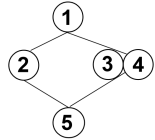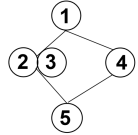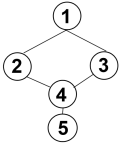Globally, people use roofs to dry out food, do their laundry and sleep. In Belfast, where we’re based, there's a culture of enjoying looking down on the city from up high, because it's in a valley. But because we were a conflict area for a long time, many people didn’t want to live, work or hang out in the city, and our roofs cape has been neglected.
Rooftop projects can be as big or as small as you want. They can be used as social or cultural spaces, for green or blue public facilities. But it's not just about commercial opportunities; it can be as simple as an individual turning his/her city balcony into a mini garden or vegetable patch. It's not just about doing it on a rooftop because it's "cool". It's about giving up the deep-rooted thought that roofs are off limits and embracing their challenges as opportunities. That can make a huge difference. For instance, we're helping turn the rooftop car park of a city central shopping centre into an outdoor space for employees, due to restrictions they now face indoors because of COVID-19.
Using rooftops creatively allows us to cope with many of the challenges faced by cities today--be those environmental, social, technological, or cultural. At the moment, we're being forced to rethink how we use public spaces due to COVID-19. With lots of restrictions on enclosed areas, we should be acknowledging rooftops as viable alternatives. For example, Rotterdam recently hosted a play that took place across its rooftops. Each roof lit up and hosted a different part of the drama, while residents sat and watched, listening to the action through headphones.
Are there any challenges? Rain is one. Also is health and safety. But there are creative and practical solutions to all the barriers we face. In fact, the challenges are what make rooftops so exciting----because they give you even more opportunities to be creative and solve problems. It is always a matter of trial and error.
1. What matters most in taking advantage of rooftops?| A.One's own mindset(心态) | B.Geographic location |
| C.Commercial values | D.Individual support |
| A.Flexible | B.Specific |
| C.Practical | D.Multiple |
| A.What to do with trial and error |
| B.Reasons for building rooftop projects |
| C.How to solve the mentioned challenges |
| D.Obstacles in the course of urban development. |
| A.advise people to start rooftop projects |
| B.present benefits of rooftop-based economies |
| C.offer solutions to long-term city development |
| D.introduce rooftop projects in Belfast |
相似题推荐
【推荐1】Some houses are designed to be smart. Others have smart designs. An example of the second type of house won an Award of Excellence from the American Institute of Architects.
Located on the shore of Sullivan’s Island off the coast of South Carolina, the award-winning cube-shaped beach house was built to replace one smashed to pieces by Hurricane Hugo a few years ago. Hugo struck Soutii Carolina, killing 18 people and damaging or destroying 36,000 homes in the state.
Before Hugo, many new houses built along South Carolina’s shoreline were poorly constructed, and enforcement of building codes wasn’t strict, according to architect Ray Huff, who created the cleverly-designed beach house. In Hugo’s wake, all new shoreline houses are required to meet stricter, better-enforced codes. The new beach house on Sullivan’s Island should be able to withstand a Category 3 hurricane with peak winds of 179 to 209 kilometers per hour.
At first sight, the house on Sullivan’s Island looks anything but hurricane-proof. Its redwood shell makes it resemble “a large party lantern” at night, according to one observer. But looks can be deceiving. The housed wooden frame is reinforced with long steel rods to give it extra strength.
To further protect the house from hurricane damage, Huff raised it 2.7 meters off the ground on timber (木材) pilings — long, slender columns of wood anchored deep in the sand. Pilings might appear insecure, but they are strong enough to support the weight of the house. They also elevate the house above storm surges. The pilings allow the surges to run under the house instead of running into it. “These swells of water come ashore at tremendous speeds and cause most of the damage done to beach-front buildings,” said Huff.
Huff designed the timber pilings to be partially concealed (隐藏) by the house’s ground-to-roof shell. “The shell masks the pilings so that the house doesn’t look like it’s standing with its pant legs pulled up,” said Huff. In the event of a storm surge, the shell should break apart and let the waves rush under the house, the architect explained.
1. The award-winning beach house is quite strong because ________.| A.it is strengthened by steel rods | B.it is made of redwood |
| C.it is in the shape of a shell | D.it is built with timber and concrete |
| A.withstand peak winds of about 200 km/hr |
| B.anchor stronger pilings deep in the sand |
| C.break huge sea waves into smaller ones |
| D.prevent water from rushing into the house |
| A.to strengthen the pilings of the house |
| B.to give the house a better appearance |
| C.to protect the wooden frame of the house |
| D.to slow down the speed of the swelling water |
| A.fancy-looking | B.waterproof |
| C.easily breakable | D.extremely strong |
【推荐2】Vancouver has had a crazy property(房地产)market since it hosted the winter Olympics in 2010.The downtown area is forested with new apartment blocks. Prices have risen by nearly 60% in the past three years. But until recently developers have largely avoided Chinatown. It is an underdeveloped area. Many Chinatown residents(居民)are old and poor.
Developers now have Chinatown in their sights. Two years ago one built a 17-storey apartment building on its edge. This alarmed many residents,who had formed a group to stop the high-rise advance,now called #SaveChinatownYVR. Ms Melody Ma is its leader. Recently it has been successful.
The main theatre of battle is a car park known as 105 Keefer,where Beedie Living plans to build a nine-storey brick-and-glass apartment block. The developer promises 111 luxury flats,with rooftop landscaping and shops below.
105 Keefer is in an area rich with cultural associations. Just to the south is a monument to Chinese-Canadian builders of the Canadian Pacific Railway and veterans of the Second World War. Across the street is the Sun Yat-sen Classical Chinese Garden and the Chinese Cultural Centre Museum. "A lot of people were frightened" because of the building's "closeness to sacred sites in the heart of Chinatown", says Ms Ma. Some residents also fear that it will push up rents.
Conservationists hope that the parking lot is where they can stop development, which they say has spoil the charm of other Vancouver neighbourhoods such as Mount Pleasant. The dispute(分歧)is part of a debate about the city's identity,says Andy Yan,an urban planner. Vancouverites, he says,are asking themselves,"Who are we?And what are we building for?"The people who might want to buy the flats that do not yet exist are,of course,not being consulted.
1. What will Ms. Melody Ma agree?| A.To preserve Chinatown. |
| B.To rebuild Chinatown. |
| C.To build skyscrapers in Chinatown. |
| D.To promote the property market in Chinatown. |
| A.To state some reasons. | B.To offer some advice. |
| C.To make some comparisons. | D.To introduce a new topic. |
| A.Positive. | B.Doubtful. |
| C.Unfavorable. | D.Divided. |
| A.The alarmed citizens of Vancouver |
| B.The cultural associations of 105 Keefer |
| C.The property battle in Vancouver's Chinatown |
| D.The identity of Vancouver |
【推荐3】One Dollar a Night in New York
When it comes to finding a place to stay for a night in New York, things don’t always come cheap. However, artist Miao Jiaxin, a Shanghai native who moved to New York in 2006, is offering people the chance to stay in his apartment in Brooklyn.
Guests can easily book Miao’s room on the Internet. Nevertheless, although they will be housed in his apartment, it appears to have more in common with a jail cell(牢房)than a regular bedroom as a cage in the center of the room is where guests will stay.
Meanwhile, the cage is monitored and recorded by two cameras and the activity of guests is filmed for the whole time they stay in the cell.
The room is inspired by the alienation(疏离感)Miao felt as a new immigrant — feelings he believes are universal. “It’s not for fun. It’s for an experience.
| A.It’s only one dollar a night. |
| B.It’s too expensive for common people to afford. |
| C.More like a psychological New York City experience. |
| D.If you break any of those rules above, you will be fined 100 dollars. |
| E.Actually, Miao’s room is so popular that you have to book three months in advance. |
| F.Despite the strict rules, guests are given a key to let themselves in and out as they please. |
| G.Miao says that to live in his jail cell, people don’t have to be a criminal, but there are several rules. |
【推荐1】Every kid has their own favorites. Dolls, dinosaurs, remote controls and cellphones — they might have a toy box with a wide range of play things to keep them entertained, but there's firm favorite they always reach for first-cars. Although the sex difference in the toy world remains, it's not only little boys who are drawn to all things with wheels. That my 20-month-old daughter dotes on the red bus toy is the proof of this.
From age 0 to 2, children are in the sensorimotor (感觉运动的) stage of development, explains Alyssa Wilkins. “They are learning by absorbing everything through their senses — sight, touch, taste, smell and hearing,” Wilkins says. “Toys and real-life objects like cars are very sensorily engaging. Kids can interact with toy cars, trucks, etc. through spinning (旋转) their wheels, watching them move in a variety of directions, or hearing the sounds they make.”
Plus, kids are just naturally drawn to loud and moving objects. “They see the lights on the cars and the rolling wheels, and hear the sound of the running engine. It's very engaging,” Wilkins says. “Kids will always be drawn to attractive and loud things because that is what engages their brain and sensory systems.”
Another appeal of toy vehicles is that they're typically small enough to fit in a child's hand Cars become the favorite of both boys and girls because they can put their cars in their pockets r carry them around. A car is also a cause-and-effect toy — it teaches children that their actions can make something happen. “It's super interesting and exciting for kids to learn that they can change something in their environment, and they may feel proud of what they have done,” Capanna-Hodge says.
Every child is unique in how they engage with toys, and the reasons for their play style may be diverse and complex. Ultimately, how your kids play with their toy vehicles could be a little window into what controls or excites them.
1. What does the underlined phrase “dotes on” in Paragraph I mean?| A.Turns down. | B.Goes in for. | C.Runs into. | D.Has control of. |
| A.The influence form parents. | B.The shape of toys vehicles. |
| C.The exciting sensory input. | D.The peaceful learning environment. |
| A.The smaller the toy vehicles are, the more the kids like them. |
| B.Boys perform better than girls while playing with toy vehicles. |
| C.The more toy vehicles the kids have, the more benefits the kids get. |
| D.Kids can gain a sense of achievement from playing with toy vehicles. |
| A.Why toy vehicles are kids' favorites |
| B.How toy vehicles can boost kids' five sense |
| C.Why parents choose toy vehicles for their kids |
| D.How parents can encourage kids to play with toy vehicles |
A. | B. |
C. | D. |
【推荐2】You have probably read about robots replacing human labour as a new era of automation takes root in one industry after another. However, a new report suggests humans are not the only ones who might lose their jobs.
In New Zealand, farmers are using drones(无人机)to herd and monitor cows and sheep, taking up the position that highly intelligent dogs have held for more than a century. The robots have not replaced the dogs entirely, Radio New Zealand reports, but they have appropriated(盗用)one of the animal's most powerful tools: barking. The DJI Mavic Enterprise, a $ 3,500 drone favored by farmers, has a feature that lets the machine record sounds and play them over a loudspeaker, giving the machine the ability to imitate its canine counterparts.
Corey Lambeth, a shepherd on a farm, told RNZ the machines are surprisingly effective. “That's the one thing I've noticed that when you're moving cows the old cows stand up to the dogs, but with the drones, they've never done that,” he said, noting the drones move cows faster, with less stress, than the dogs do.
The drones come in handy for more than just herding cows and sheep. The robots allow farmers to monitor their land from afar, monitoring water and feed levels and checking on the animals' health without disturbing them. Jason Rentoul told RNZ that a two- hour herding job that used to require two people and two teams of dogs could be accomplished in 45 minutes using a single drone. “On a hilly farm where a lot of stuff is done by farmers on foot, the drones really save a lot of man hours,” he said.
For now, farmers say, there is still a need for herding dogs, primarily because they have a longer lifespan than drones, can work in bad weather and do not require an electrical socket every few hours to recharge.
1. What does the underlined part in Paragraph 2 refer to?| A.Farmers. | B.Dogs. | C.Sheep. | D.Loudspeakers. |
| A.Herding dogs will gradually lose their position on the farmland. |
| B.The drones can help monitor weather conditions with the current technology. |
| C.The drones are multifunctional and leave the animals undisturbed. |
| D.The market for the DJI Mavic Enterprise is pretty small because of its high price. |
| A.The drones can't bark as loudly as the dogs do. |
| B.Cows are not used to seeing the drones. |
| C.The drones are much more expensive. |
| D.The drones' power is limited and they need charging. |
| A.Supportive. | B.Objective. | C.Critical. | D.Doubtful. |

Could a sudden sharp increase in the size and variety of ancient life have been linked to dramatic changes deep inside the Earth? About 550 million years ago, in the Cambrian (寒武纪)period of prehistory so many new animals appeared that the event is referred to as the “Cambrian explosion”. Scientists have long wondered what triggered the change, after billions of years in which life was mostly extremely small. Now it seems that the formation of Earth’s inner core—a solid iron ball at the centre of Earth—was crucial.
The inner core lies about 3,000 miles below Earth’s surface and is 1,500 miles across. It is surrounded by a liquid-metal outer core and is slowly growing as the liquid metal cools. Heat from the inner core powers swirling (旋转)movements in the liquid layer, which create a strong magnetic field (磁场)around Earth—a barrier that protects life by blocking harmful particles from outer space.
The magnetism-driving inner core seems to be a recent arrival, however. In 2019 a team led by Professor John Tarduno at the University of Rochester, New York, Us, analysed chemicals in ancient rocks from Quebec Canada, which trap a record of the magnetic field at the moment they formed. The team found that 565 million years ago, Earth’s magnetism had less than 10% of its strength today. This suggests that the swirling of liquid metal, which had always produced a protective magnetic force, was growing weak.
Now, further work has shown that the field’s strength started to recover just before the Cambrian explosion—almost certainly driven by the newly formed inner core providing a fresh power source. It seems highly likely that the two events are somehow linked.
“I don’t think that the return of Earth’s magnetic field and the subsequent explosion of life on Earth can be unconnected” says Tarduno. Working out the exact nature of the connection, however, will need a lot more scientific research.
1. What does the underlined word “triggered” in Paragraph 1 mean?| A.Restricted. | B.Avoided. | C.Caused. | D.Slowed. |
| A.The inner core’s features. | B.The inner core’s structure. |
| C.The inner core’s motion. | D.The inner core’s development. |
| A.Earth’s magnetism was very weak 565 million years ago. |
| B.The inner core acts as a barrier against harmful particles. |
| C.Ancient rocks’ chemicals save a record of the magnetic field. |
| D.The field’s strength started to weaken before the Cambrian explosion. |
| A.Causes of the explosion of ancient life. |
| B.Evidence for the exact character of the link. |
| C.Research methods adopted by Tarduno-led team. |
| D.Explanations for the return of Earth’s magnetic field. |



